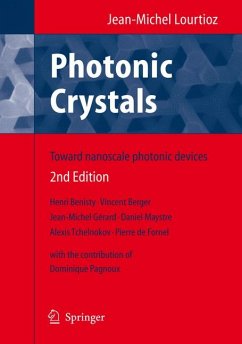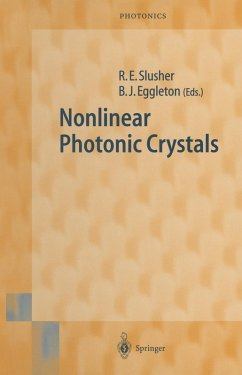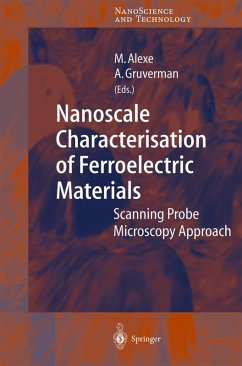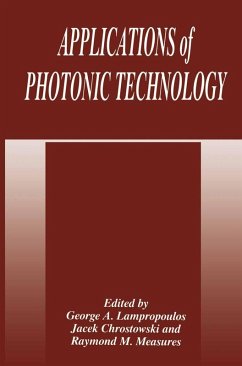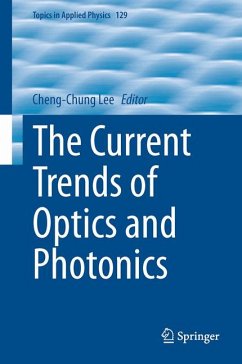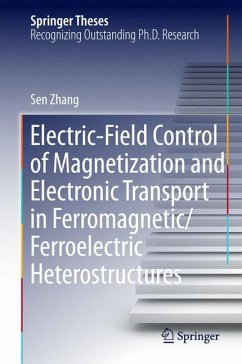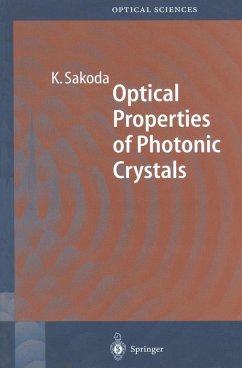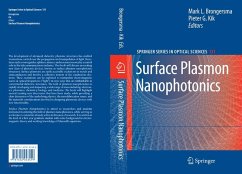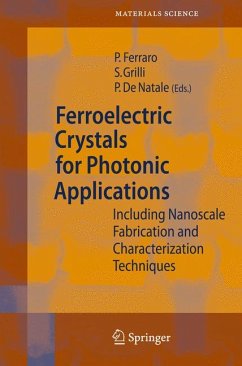
Ferroelectric Crystals for Photonic Applications (eBook, PDF)
Including Nanoscale Fabrication and Characterization Techniques
Redaktion: Ferraro, Pietro; De Natale, Paolo; Grilli, Simonetta

PAYBACK Punkte
80 °P sammeln!
The idea to write a new book in the ?eld of ferroelectric crystals arose from some considerationsreportedinthefollowing. Inthelast5years,severalgroupsallaround the world in the ?eld of engineering and characterization of ferroelectric crystals have published more than 300 papers. The motivation for such an intense research activity is referable to the fact that the ferroelectric crystals are a key element for the most attractive and useful photonic and optoelectronic devices. In fact, during the 60ies, the scientists realized that the ferroelectric crystals could have been - ?ciently used to g...
The idea to write a new book in the ?eld of ferroelectric crystals arose from some considerationsreportedinthefollowing. Inthelast5years,severalgroupsallaround the world in the ?eld of engineering and characterization of ferroelectric crystals have published more than 300 papers. The motivation for such an intense research activity is referable to the fact that the ferroelectric crystals are a key element for the most attractive and useful photonic and optoelectronic devices. In fact, during the 60ies, the scientists realized that the ferroelectric crystals could have been - ?ciently used to generate new, unavailable frequencies, taking advantage of the freshly proposed birefringent phase-matching method. The synchronized rush for the development of novel coherent sources and for the discovery of the best-suited nonlinear crystals for mixing and generation had started. Consequently, the range of applications of ferroelectric crystals has enormously widened in the last years, es- cially based on the use of periodically poled structures (i. e. , PPLN, PPLT, PPKTP, or PPKTA) to quasi-phase-match optical interactions. A new generation of sources is ?nding increasing applications in various ?elds, including high sensitivity trace gas monitoring and any kind of advanced spectroscopic set-ups, thus replacing "old style" gas lasers like Argon-ion or dye lasers. New possibilities are also being - plored to engineer ferroelectric crystals with two- or three-dimensional geometries. Results from this ?eld will allow developing photonic devices combining photonic band-gap properties and nonlinear conversion processes, i. e. , nonlinear photonic crystals.
Dieser Download kann aus rechtlichen Gründen nur mit Rechnungsadresse in A, B, BG, CY, CZ, D, DK, EW, E, FIN, F, GR, HR, H, IRL, I, LT, L, LR, M, NL, PL, P, R, S, SLO, SK ausgeliefert werden.



